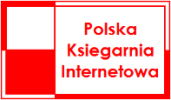Categories
- Toys
- Puzzle
- Board games
-
 Szybka wysyłka
Szybka wysyłka
- Promocje!
- Albums
- Paper items
- Audiobooks in Polish
- Fables
- Biographies
- Polish books for children and teens
- Encyclopedias and dictionaries
- Esoteric
- Speculative fiction
- Movies
- History
- Horrors and suspense
- John Paul II
- Calendars
- Comic books
- Crime and mystery
- Kitchen and diets
- Books in English
- Legends and fables
- Literatura erotyczna
- Non-fiction books
- Music
- Science and scientists
- Natural sciences
- Science and popular science
- Textbooks / schoolbooks
- How to books
- Religion and faith
- Romance
- Science fiction
- Thrillers
- Dictionaries
- Sport
- Art and photography
- Technology
- Military and wars
- Health and beauty
Newsletter
Sign up for our newsletter:
Wyrażam zgodę na otrzymywanie oferty handlowej. Więcej
This field is required
I hereby agree with the terms of service
This field is required
Wait...
- Home /
- Technology /
- Technology /
- Technika transportu /
- Lotnictwo. Kosmonautyka. Loty kosmiczne /
- The Mosquito in the USAAF De Havilland’s Wooden Wonder in American Service
Zapraszamy do zakupu tego produktu.
| Contact us New products | Bestsellers from Poland Recently viewed products | Sitemap Delivery | Privacy Notice Terms & Conditions |






Polska Księgarnia Online - Polskie Książki z wysyłką Wielkiej Brytani. Great selection of Polish Books with low cost shipping in UK.
Powered by nopCommerce
Powered by nopCommerce
Copyright © 2024 Polska Ksiegarnia Internetowa. All rights reserved.



